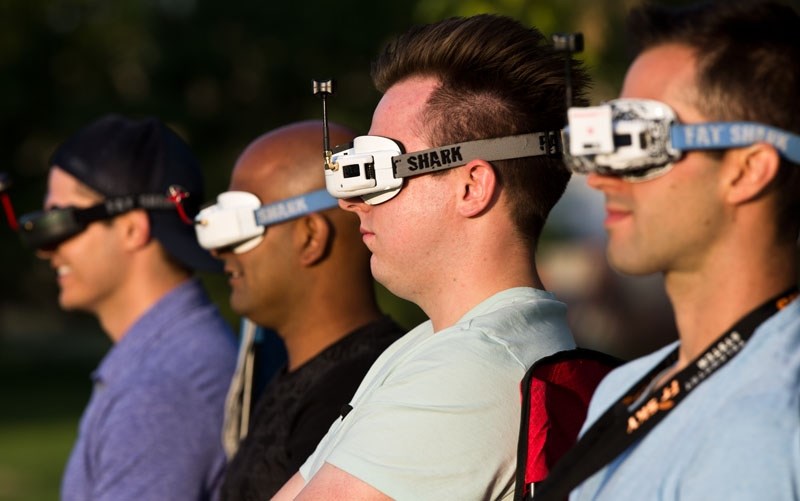Have you ever had a dream where you’re flying? Zipping around the landscape with a bird’s-eye view of everything below you, looping and spinning like a bird?
Travis Ames has, but he wasn’t content to relegate that experience to dreamland. Instead he dons a high-tech visor and picks up a controller, and does the next best thing – flies a remote-control drone with a first-person view.
“I feel like I’m piloting this little machine, flying through these gates like I’m an aircraft pilot,” he said. “You just get that rush, that feeling of adrenaline.”
“You get such an adrenaline rush from it,” added fellow racer Corey Csaba. “It’s like you’re in the pilot seat of the drone, which is something you just can’t really experience otherwise.”
Drones are radio-controlled helicopters, usually having four individual propellers in a square pattern, which have become immensely popular for a wide variety of commercial applications like aerial photography.
But over the past few years the technology has emerged and become cheap enough for recreational electronics enthusiasts to get in on the action and launch a high-tech, high-paced sport. The small helicopters can, depending on their size and power, travel at speeds well over 100 km/h.
One of the early adopters of this technology in St. Albert is Steve Kordyban, whose Canadian Drone Racing league is preparing to host the inaugural Canadian Drone Racing Championship in Edmonton next weekend.
The July 30-31 event will see a few dozen racers from around western Canada come to the Edmonton Expo Centre to pit their skills against each other in a series of races. However there’s still not a national or international standard on how to run these events, so Kordyban’s doing a bit of flying by the seat of his pants.
He explained he’s opted to divide the drones into classes based on propeller size. Racers will compete on the course six at a time, and will be eliminated based on their results. At this point, though, the event is as much about bringing racers and enthusiasts together as it is about the competition itself.
And Kordyban emphasized anyone interested in getting involved in the growing sport will undoubtedly find any answers they’re looking for from more established racers.
“It’s a really open community, and the amount of knowledge the community has developed over such a short period of time is pretty awesome as well,” he said.
That knowledge was on display last week at Norwester Park, a green space in a northwest Edmonton industrial park, where four racers involved in the upcoming competition were practising their skills.
But that knowledge isn’t enough in and of itself – it takes hours and hours on the controllers to be able to get used to fly the drones without goggles, or by line of sight, then it can take even longer to get used to the first-person view.
“It’s one thing to be able to fly line of sight, but making that transition into first-person-view flying, that takes practice,” Kordyban said.
And a race is truly an interesting spectacle to behold: four men sitting in lawn chairs with big goggles on their head and controllers in their hands, while four little drones zip around a small course they had set up.
While the small craft can get up to speeds well in excess of 100 km/h, and are highly manoeuvrable, none of the four racers seemed keen to get too close to the red-tailed hawk that was circling overhead.
Although the drones are fairly small, there’s nonetheless a risk of collisions with other drones, or worse, with people.
“We already had one minor collision tonight,” Kordyban said.
Ryan Nair explained the risk of collision is part of the thought process behind racing in an industrial area in the evening, where there are few people around.
“It’s safe; it doesn’t put the general public at risk,” he said. “I’m not going to fly in a park where kids are playing, or people are walking their dogs. You’re asking for trouble.”
But at this point, there’s little regulation surrounding recreational use of drones. For drones used in commercial operations, or ones that have a range longer than the 50-100 metres used for drone racing, different licences are required.
“This is just recreational, so it’s your responsibility to fly safely,” Kordyban said.




